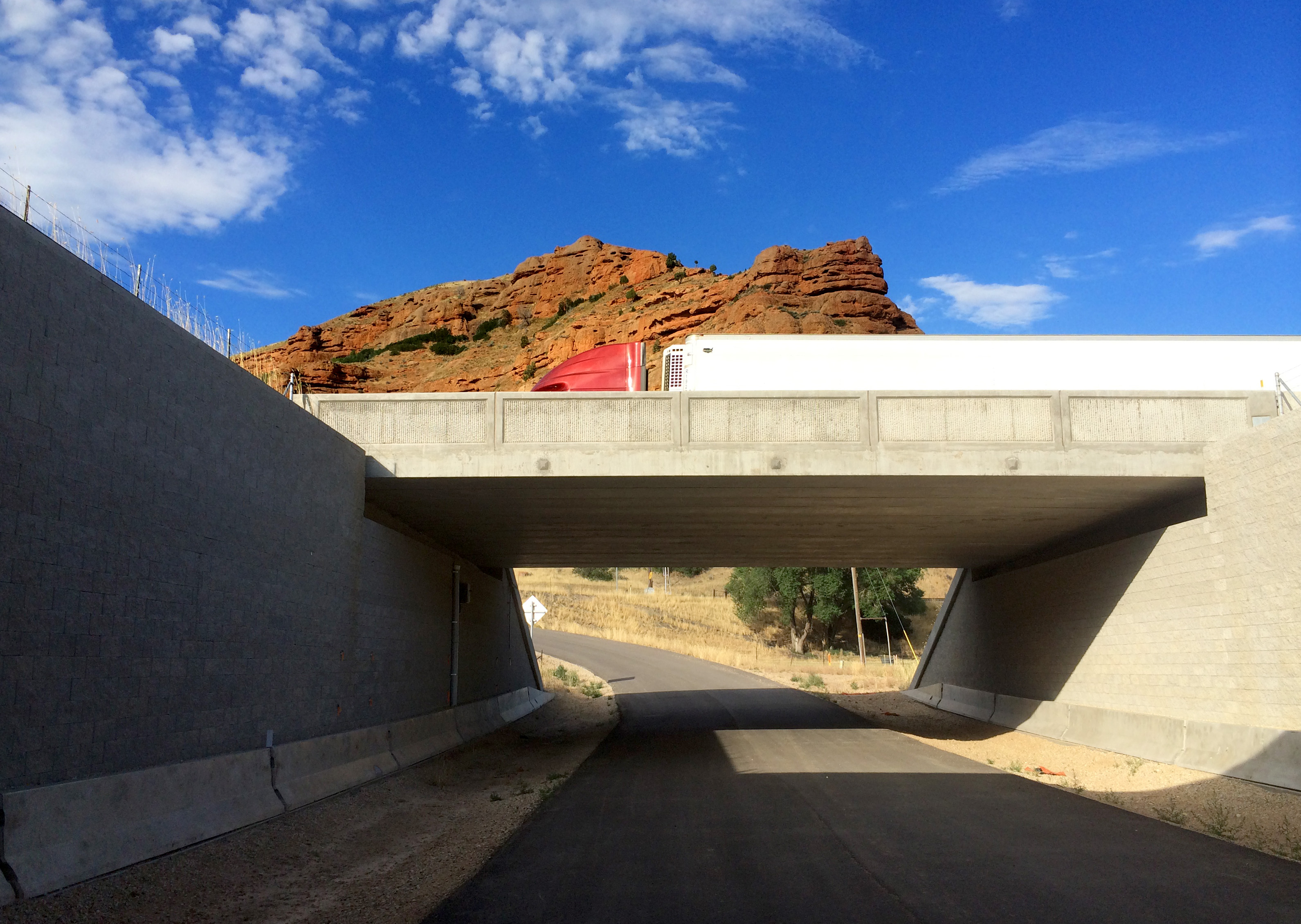February 13, 2015
Innovation Implementation: Geosynthetic Reinforced Soil-Integrated Bridge System
Geosynthetic reinforced soil-integrated bridge system technology is an Every Day Counts innovation that can help reduce bridge construction time and cost. Because they are easy to build and use common equipment and materials, GRS-IBS projects can be built in weeks instead of months.
Since GRS-IBS was first named an EDC innovation in 2010, use of the technology has expanded from mainly two counties in New York and Ohio to nearly 200 structures in 44 states. As GRS-IBS use increases, so does the range of applications.
GRS-IBS is a simple design using layers of geosynthetic reinforcement and compacted fill that can be built with readily available equipment and materials, cutting bridge construction time and cost.
At first, GRS-IBS structures were built on county roads with low traffic, but 14 bridges have now been built on more heavily traveled National Highway System roads. That includes twin GRS-IBS structures on I-84 near Echo, Utah, and on PR-2 near Yauco, Puerto Rico.

Using GRS-IBS technology helped save time and money on a Utah bridge project
On the Utah project, using GRS-IBS and other accelerated bridge construction techniques saved about 7 percent over conventional construction costs, cut the project schedule from 194 to 125 days and required road closure time of just 34 hours.
Several GRS-IBS structures were designed for use in active seismic regions, including one on the Big Island of Hawaii. GRS-IBS is used on projects over waterways and on grade separation projects, including crossings over roads, rail lines, and pedestrian and bicycle trails.
Florida Focuses on Local Agency Program
The Florida Department of Transportation’s Local Agency Program was the focus of a two-day meeting in Tampa. One discussion topic was the Local Agency Program Community of Practice, a stakeholder partnering group that collaborates to identify opportunities to streamline local project development and implementation processes across the state. Other topics included new local public agency certification requirements and training needs.
Iowa Plans 3D Workshop
The Iowa Department of Transportation plans to host a workshop on 3D Design and Modeling for Highway Structures April 14 and 15 in Ames. The Iowa DOT asks transportation professionals in the Midwest to save the date to attend the workshop, and details will be provided in a future EDC News. On the first day, highway agency representatives from across the country will share their 3D modeling experiences and industry speakers will provide the perspective of consultants, contractors and fabricators. The second day will feature hands-on training.
Virginia Makes Progress on Design-Build Project
The Elizabeth River Tunnels project in the Hampton Roads area of Virginia passed a key milestone. The immersion and connection of the fourth of 11 elements for the new Midtown Tunnel westbound tube have been successfully executed. This is the first element placed in open water using a custom lay barge, a barge used in offshore construction. The tunnel project, Virginia’s largest highway project, is using the design-build delivery method and a public-private partnership. It’s designed to reduce congestion and enhance safety in Hampton Roads.


